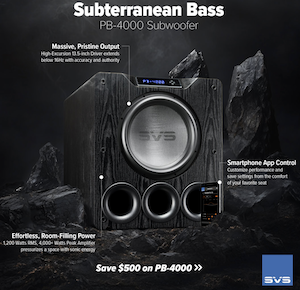jtalden
Senior Member
More
- Preamp, Processor or Receiver
- Marantz AV7705 Pre/Pro
- Main Amp
- VTV 6 chnl NC252MP P-amp x 2
- Additional Amp
- Behringer DCX2496 x 2
- Universal / Blu-ray / CD Player
- OPPO BDP-103 Universal Player
- Front Speakers
- DIY SEAS H1456/H1212 Spkr x 5
- Subwoofers
- DIY JBL 2235H 15" SW x 2
- Screen
- Da-Lite Da-Snap 39105V - 92"
- Video Display Device
- JVC DLA-X790R
Re: "Bug fix: If not setting t=0 at IR peak the win ref time was not being reset after estimate IR delay, causing incorrect phase for FDW"
There appears to be problem:
A proposal (to ease operations in setting driver phase tracking):
The Ref time could optionally (check box?) be locked for 'all selected', or for 'all' (including new) measurements. It would thus not change when the impulse is manually moved and thus the phase would rotate accordingly.
This way a tweeter could be measured and the Ref time locked according to its impulse peak. Then a midrange is measured and the phase would be calculated relative to the locked Ref time. The delay of the midrange could then to be changed and remeasured until the desired phase relationship is achieved.
I do this in REW manually by moving a copy of the midrange impulse to find the delay needed and then set that in the system. It would work for either methodology.
The set Ref time could also apply to the GD, Step and Spectrogram charts as well. This would save a lot of impulse shifting to 0.00 ms in my case.
Also, The displayed resolution value of the Ref time is 0.0 ms. This is fine for work with SW timing (the most common situation), but smaller values should be visible for mid or high frequency crossovers. I would prefer to see at least 0.00 resolution visible to better match with common DSP devices for delay. REW already calculates to any value, but it is not displayed. Minor delay tuning adjustments are difficult to keep track of without this visibility.
There appears to be problem:
- See the attached midwoofer mdat. The original impulse measurement (1) set near 0.0 ms. has been copied (2). The "copy" has then been manually shifted -0.5ms to +0.5ms on the chart. The Ref time automatically shifted also and is shown now as +0.5. Thus, it is in the same position relative to the impulse. Now view the overlay of the phase. I would expect phase to be calculated relative to the indicated Ref time and be identical. They are not.
- If we now apply an FDW to the shifted copy, the Ref time stays the same, but the phase is changed to another incorrect result. Removing the FDW the phase returns to the original incorrect result.
- There appears to be no Ref time setting that provides the correct phase if the impulse is positioned away from 0ms. The further away, the more the phase is distorted.
A proposal (to ease operations in setting driver phase tracking):
The Ref time could optionally (check box?) be locked for 'all selected', or for 'all' (including new) measurements. It would thus not change when the impulse is manually moved and thus the phase would rotate accordingly.
This way a tweeter could be measured and the Ref time locked according to its impulse peak. Then a midrange is measured and the phase would be calculated relative to the locked Ref time. The delay of the midrange could then to be changed and remeasured until the desired phase relationship is achieved.
I do this in REW manually by moving a copy of the midrange impulse to find the delay needed and then set that in the system. It would work for either methodology.
The set Ref time could also apply to the GD, Step and Spectrogram charts as well. This would save a lot of impulse shifting to 0.00 ms in my case.
Also, The displayed resolution value of the Ref time is 0.0 ms. This is fine for work with SW timing (the most common situation), but smaller values should be visible for mid or high frequency crossovers. I would prefer to see at least 0.00 resolution visible to better match with common DSP devices for delay. REW already calculates to any value, but it is not displayed. Minor delay tuning adjustments are difficult to keep track of without this visibility.












